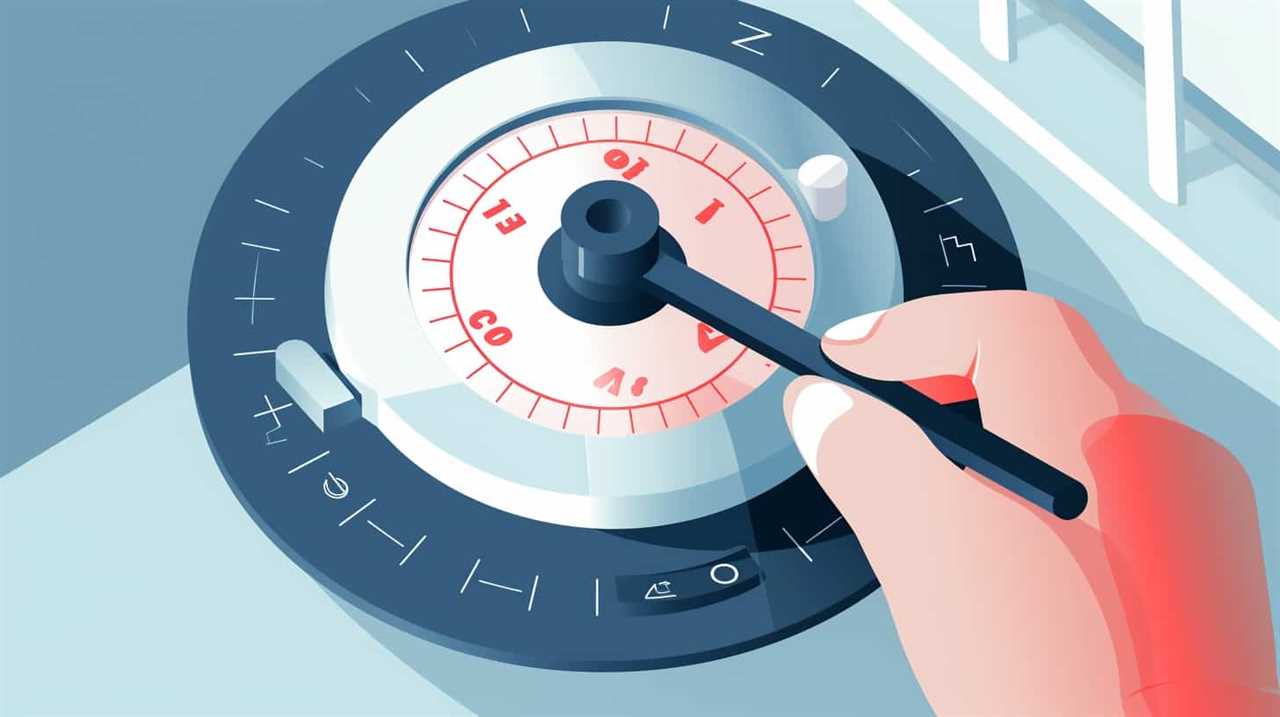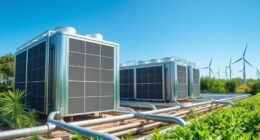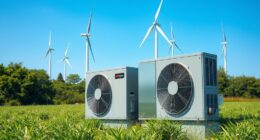Hello, fellow beginners, welcome to our basic tutorial on the key concepts of the refrigeration cycle!
Here, we’ll break down the fundamental steps and components of this crucial process.
From understanding heat transfer to selecting the right refrigerant for your heat pump, we’ve got you covered.
So, if you’re ready to dive into the world of refrigeration, join us as we demystify the cycle and empower you with the knowledge to troubleshoot common issues.

Let’s embark on this cool journey together!
Key Takeaways
- The refrigeration cycle allows for the transfer of heat using a refrigerant flow.
- Understanding heat transfer and refrigerant flow is essential for efficient cooling solutions.
- Heat transfer occurs through conduction, convection, or radiation.
- The evaporator absorbs heat from the surroundings.
The Fundamentals of the Refrigeration Cycle
Now that we’ve covered the basic concepts, let’s delve into the fundamentals of the refrigeration cycle.
The refrigeration cycle is a process that allows for the transfer of heat from one area to another, using a refrigerant flow. Heat transfer is a crucial aspect of this cycle, as it allows for the cooling of a specific area or object.
The refrigerant flow is responsible for transporting the heat from the desired area to the refrigeration system, where it’s then released into the surroundings. This continuous flow of refrigerant enables the system to maintain a consistent temperature and provide the necessary cooling effect.

Understanding the principles of heat transfer and refrigerant flow is essential for anyone working in the field of refrigeration, as it ensures efficient and effective cooling solutions for those we serve.
Understanding Heat Transfer in the Refrigeration Cycle
To understand heat transfer in the refrigeration cycle, we must grasp the principles of how heat is moved from one area to another using a refrigerant flow. Here are four key points to consider when it comes to the heat transfer process in the refrigeration cycle:
-
Latent Heat: During the refrigeration cycle, the refrigerant undergoes a phase change from a liquid to a vapor and vice versa. This phase change involves the absorption and release of latent heat, which is crucial for cooling or heating purposes.
-
Refrigerant Selection: The choice of refrigerant plays a significant role in heat transfer efficiency. Different refrigerants have different thermodynamic properties, such as boiling points and heat capacities, which affect their ability to transfer heat effectively.

-
Heat Exchange: Heat transfer occurs through the process of heat exchange between the refrigerant and the surrounding air or water. This exchange can happen through conduction, convection, or radiation, depending on the specific system design.
-
Heat Transfer Rate: The rate at which heat is transferred in the refrigeration cycle is influenced by factors such as the temperature difference between the refrigerant and the surroundings, the surface area available for heat exchange, and the flow rate of the refrigerant.
Understanding these principles of heat transfer in the refrigeration cycle is essential for optimizing the performance and efficiency of refrigeration systems.
In the next section, we’ll explore the key components of the refrigeration cycle for heat pumps, which further contribute to effective heat transfer.

Key Components of the Refrigeration Cycle for Heat Pumps
First, let’s take a look at the three key components of the refrigeration cycle for heat pumps. These components play a crucial role in ensuring heat pump efficiency and refrigeration cycle performance.
The first component is the evaporator, where the refrigerant absorbs heat from the surrounding environment. As the warm air passes over the evaporator coils, the refrigerant, typically in a liquid state, evaporates and turns into a gas.
The second component is the compressor, which is responsible for increasing the pressure and temperature of the refrigerant gas. This process is crucial as it allows the refrigerant to release heat at a higher temperature, making it suitable for heating purposes.
Lastly, we’ve the condenser, where the refrigerant releases heat to the desired area. The high-pressure gas is condensed back into a liquid state, releasing heat and allowing the cycle to continue.
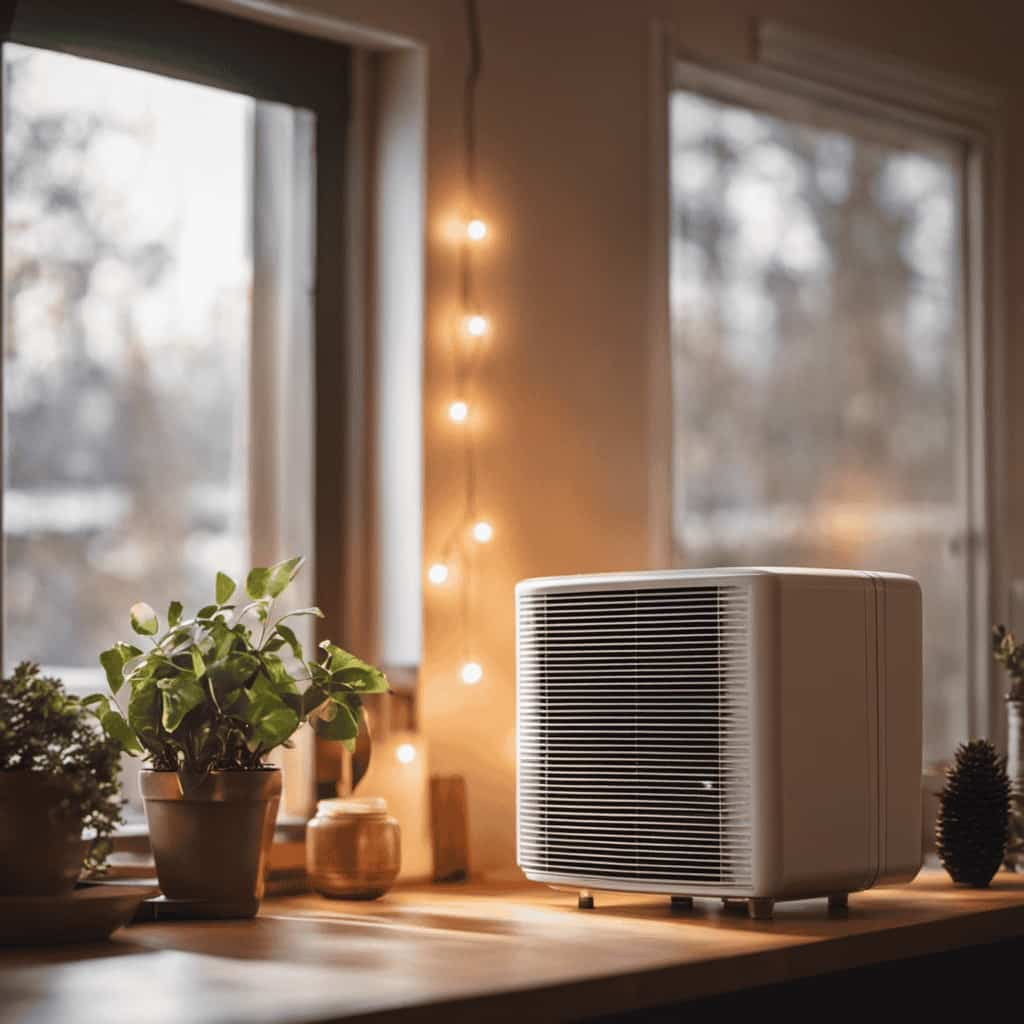
The Role of Evaporation in the Refrigeration Cycle
Now let’s explore the important role of evaporation in the refrigeration cycle.
Evaporation is the process by which a liquid refrigerant absorbs heat from its surroundings and changes into a vapor. This latent heat transfer process is crucial for cooling in a refrigeration system, as it allows the refrigerant to absorb heat and carry it away from the desired area.
Understanding the role of evaporation is essential in comprehending how refrigeration systems work and how they provide cooling effects.
Cooling Through Evaporation
We use evaporation to cool the refrigerant by absorbing heat from the surrounding environment and releasing it elsewhere.

Evaporative cooling is a vital process in refrigeration cycles and plays a crucial role in maintaining the desired temperature.
Here are four key points to understand about cooling through evaporation:
-
Evaporative cooling systems utilize the principle of evaporation to remove heat from the air, making them energy-efficient and environmentally friendly.
-
The refrigerant, in its liquid state, absorbs heat from the environment, causing it to evaporate and transform into a gas.

-
As the refrigerant evaporates, it draws heat energy from the surrounding air, effectively cooling it down.
-
The now-gaseous refrigerant is then compressed and moved to a condenser, where it releases the absorbed heat before returning to its liquid state.
Understanding the role of evaporation in the refrigeration cycle is crucial for comprehending the subsequent section on the latent heat transfer process.
Latent Heat Transfer Process
Understanding the role of evaporation and its contribution to the refrigeration cycle is essential for comprehending the latent heat transfer process.
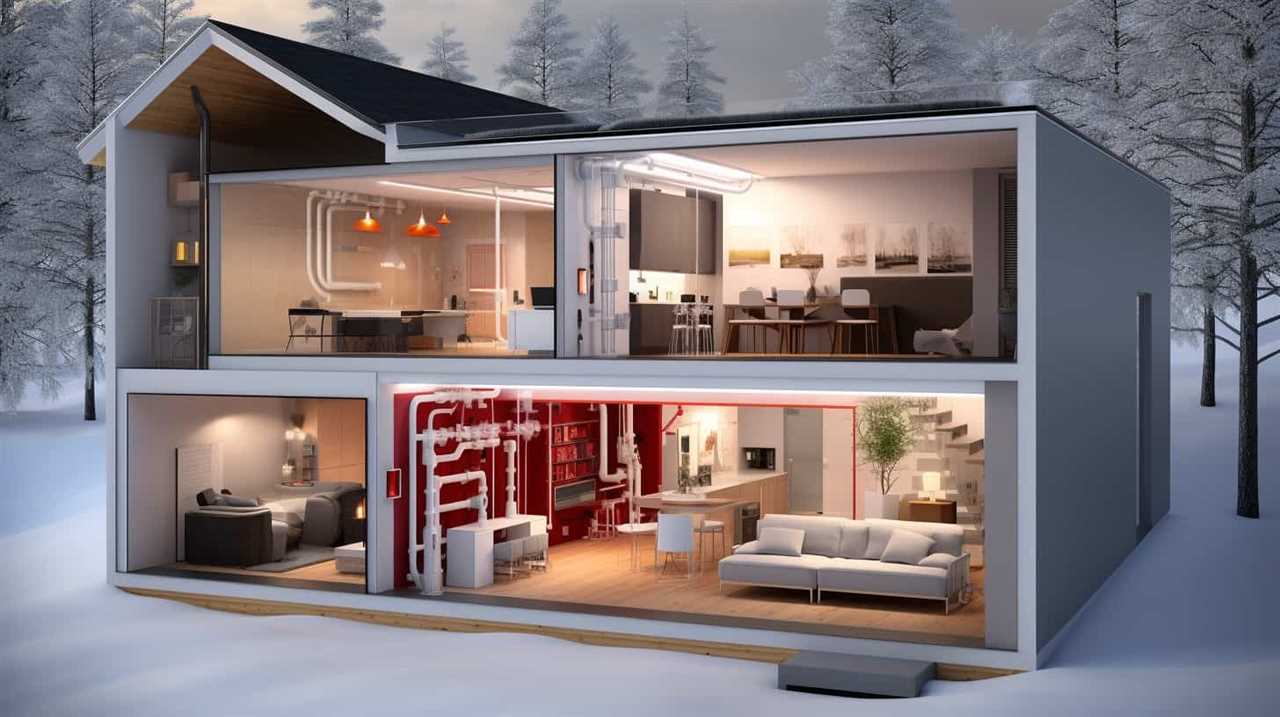
In a refrigeration system, heat is transferred from a lower temperature region to a higher temperature region, contrary to what happens naturally.
The evaporation process plays a key role in achieving this heat transfer. When a liquid refrigerant evaporates, it absorbs heat from the surroundings, thereby cooling the area.
This is due to the conversion of the liquid refrigerant into a vapor, which requires energy in the form of heat.
The absorbed heat is then carried by the vapor to the condenser, where it’s released, resulting in the desired cooling effect.

Importance in Refrigeration System
Evaporation plays a crucial role in the refrigeration cycle by facilitating the transfer of heat and enabling the refrigeration system to function effectively. Here are four reasons why evaporation is important in a refrigeration system:
-
Heat Transfer: During evaporation, the refrigerant absorbs heat from the surroundings, such as the air in a room or the contents of a refrigerator. This allows the refrigerant to change from a liquid to a gas, carrying the heat away from the space and cooling it down.
-
Energy Efficiency: Evaporation is an energy-efficient process because it utilizes the latent heat of vaporization. By using the heat from the surroundings, the refrigerant doesn’t require as much energy to undergo the phase change, resulting in lower energy consumption and reduced operating costs.
-
Cooling Effect: Evaporation provides the cooling effect necessary for refrigeration systems to maintain low temperatures. As the refrigerant evaporates, it absorbs thermal energy, causing the temperature to decrease, which is essential for preserving perishable goods and creating a comfortable environment.

-
Maintenance Importance: Proper maintenance of the evaporation component in a refrigeration system is crucial for its optimal performance. Regular cleaning and inspection of evaporator coils are necessary to prevent the accumulation of dirt or ice, which can hinder heat transfer and reduce energy efficiency.
Understanding the importance of evaporation in a refrigeration system can help users make informed decisions about maintenance and energy-saving practices, ensuring the system operates efficiently and effectively.
Condensation: A Crucial Step in the Refrigeration Cycle
Now let’s move on to the crucial step of condensation in the refrigeration cycle.
Condensation plays a vital role in temperature control, as it’s during this stage that the refrigerant releases heat and transforms from a gas to a liquid state.

Proper condensation is essential for efficient cooling and preventing system malfunctions.
Condensation and Temperature Control
We control the temperature during condensation, a crucial step in the refrigeration cycle. Proper temperature regulation ensures efficient heat transfer and optimal performance of the refrigeration system.
Here are four key factors to consider when it comes to condensation and temperature control:
-
Condenser Design: The design of the condenser plays a significant role in temperature control. It should have sufficient surface area and proper airflow to facilitate heat dissipation.

-
Refrigerant Flow Rate: The flow rate of the refrigerant affects the condensation process. Maintaining the right flow rate ensures that the refrigerant remains in the condenser for an adequate amount of time to achieve proper heat transfer.
-
Ambient Temperature: The ambient temperature surrounding the condenser can impact its performance. Higher ambient temperatures may require additional cooling measures, such as fans or water sprays, to maintain optimal condensation temperatures.
-
Pressure Regulation: Controlling the pressure in the condenser is crucial for temperature control. By adjusting the pressure, we can manipulate the boiling point of the refrigerant and regulate the condensation temperature.
Importance of Proper Condensation
Proper condensation is an essential step in the refrigeration cycle, as it ensures efficient heat transfer and optimal performance of the system.

During the refrigeration process, the refrigerant gas, after absorbing heat from the surroundings, enters the condenser. The condenser is responsible for removing heat from the refrigerant and converting it back into a liquid state.
This heat transfer process occurs as the refrigerant passes through the condenser coils, which are designed to maximize contact with the surrounding air or water.
The proper functioning of the condenser is crucial for maintaining the desired temperature inside the refrigeration system. If condensation isn’t properly achieved, it can lead to reduced efficiency, increased energy consumption, and potential damage to the system.
Therefore, it’s important to regularly maintain and clean the condenser to ensure proper heat transfer and optimal performance of the refrigeration system.

Compressors and Their Importance in the Refrigeration Cycle
In the refrigeration cycle, we rely on compressors to effectively increase the pressure and temperature of the refrigerant. Compressors play a crucial role in the overall efficiency and performance of the refrigeration system.
Here are four key points to understand about compressors in the refrigeration cycle:
-
Compressor Efficiency: The efficiency of a compressor is essential for optimal operation. It determines how effectively the compressor can compress the refrigerant and maintain the desired pressure levels.
-
Types of Compressors: There are various types of compressors used in refrigeration systems, including reciprocating, rotary, scroll, and centrifugal compressors. Each type has its unique characteristics and is suitable for specific applications.

-
Compression Process: Compressors work by drawing in low-pressure refrigerant vapor, compressing it, and then discharging it as high-pressure gas. This compression process increases the refrigerant’s temperature and pressure, allowing it to release heat energy during the condensation phase.
-
Importance in the Refrigeration Cycle: Compressors are the heart of the refrigeration cycle. They provide the necessary energy to circulate the refrigerant, enabling the transfer of heat from the cooled space to the outside environment.
Understanding the role of compressors in the refrigeration cycle is crucial for ensuring efficient and reliable cooling systems.
The Expansion Valve: Controlling Refrigerant Flow in the Cycle
The expansion valve is an essential component in the refrigeration cycle, as it controls the flow of refrigerant. It’s responsible for regulating the amount of refrigerant that enters the evaporator coil, where it absorbs heat from the surrounding air.

Proper maintenance of the expansion valve is crucial to ensure the efficient operation of the refrigeration system. Regular inspection should be conducted to check for any signs of wear or damage, such as leaks or blockages. Troubleshooting expansion valve issues requires a thorough understanding of its functioning and identifying common problems, such as improper refrigerant flow or inadequate cooling. By addressing these issues promptly, you can prevent further damage to the system and maintain optimal performance.
Now that we understand the importance of the expansion valve, let’s move on to the next section, which discusses the selection of the right refrigerant for your heat pump.
The Refrigerant: Choosing the Right One for Your Heat Pump
When selecting a refrigerant for our heat pump, we need to consider factors such as efficiency, environmental impact, and compatibility with our system. Choosing the right refrigerant is crucial as it can significantly impact the performance and lifespan of our heat pump. Here are four important considerations to keep in mind:
-
Efficiency: Look for refrigerants that have high energy efficiency ratings. This will ensure that our heat pump operates at optimal levels, saving us money on energy bills.

-
Environmental Impact: Consider refrigerants that have low global warming potential (GWP) and ozone depletion potential (ODP). Opting for refrigerants with lower environmental impact helps reduce our carbon footprint.
-
Compatibility: Ensure that the chosen refrigerant is compatible with our heat pump system. Different heat pump models have specific requirements, and using the wrong refrigerant can lead to system malfunctions and inefficiency.
-
Alternatives: Explore environmentally friendly refrigerant alternatives, such as hydrofluoroolefins (HFOs) or natural refrigerants like carbon dioxide (CO2) or ammonia (NH3). These options have lower environmental impact compared to traditional hydrofluorocarbons (HFCs) or chlorofluorocarbons (CFCs).
Considering these factors will help us make an informed decision when choosing a refrigerant for our heat pump, ensuring optimal performance and minimal environmental impact.

Troubleshooting Common Issues in the Refrigeration Cycle
To effectively troubleshoot common issues in the refrigeration cycle, we need to understand the underlying causes and implement appropriate solutions. By utilizing troubleshooting techniques, we can identify and resolve problems that may arise in the refrigeration cycle.
Some common problems include inadequate cooling, high energy consumption, and refrigerant leaks. Inadequate cooling can be caused by factors such as a dirty condenser coil or a malfunctioning compressor. High energy consumption may be due to improper refrigerant charge or a faulty thermostat. Refrigerant leaks can occur due to worn-out seals or damaged tubing.
To address these issues, it’s important to regularly clean and maintain the refrigeration system, ensure proper refrigerant charge, and promptly repair any leaks.
Frequently Asked Questions
What Are the Different Types of Refrigerants Used in Heat Pumps and Their Respective Advantages and Disadvantages?
There are different types of refrigerants used in heat pumps, each with their own advantages and disadvantages. When considering refrigerant options, it is important to assess their environmental impact.

How Does the Size and Efficiency of the Compressor Affect the Overall Performance of the Refrigeration Cycle?
The size and efficiency of the compressor significantly impact the overall performance of the refrigeration cycle. Factors such as proper sizing, motor power, and heat transfer affect compressor efficiency and, ultimately, the cycle’s effectiveness.
Can the Refrigeration Cycle Be Used for Cooling Purposes in Addition to Heating?
Yes, the refrigeration cycle can be used for cooling purposes. By utilizing the principles of heat transfer and energy efficiency, the cycle removes heat from a space and transfers it to the surroundings, resulting in a cooling effect.
What Are Some Common Problems That Can Occur in the Refrigeration Cycle and How Can They Be Resolved?
Common refrigeration cycle problems can include refrigerant leaks, compressor issues, and temperature control malfunctions. Troubleshooting techniques involve checking for leaks, inspecting compressor components, and adjusting temperature settings.
Is It Possible to Retrofit an Existing HVAC System to Incorporate a Refrigeration Cycle for Heat Pump Functionality?
Yes, it is possible to retrofit an existing HVAC system to incorporate a refrigeration cycle for heat pump functionality. This allows for efficient heating and cooling, providing comfort and energy savings.
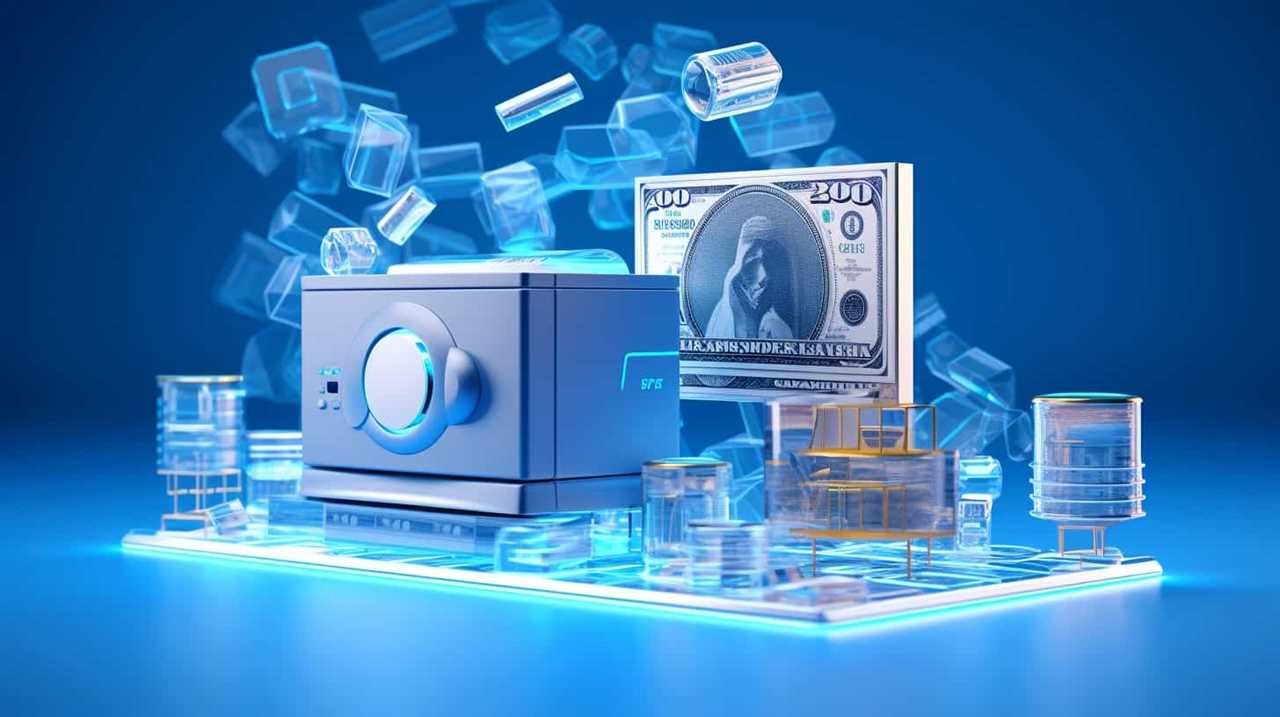
Conclusion
In conclusion, understanding the basics of the refrigeration cycle is crucial for anyone new to the field. Just like the intricate workings of a well-oiled machine, each component plays a vital role in the efficient transfer of heat.
From the evaporation process to the crucial step of condensation, every step must be carefully executed. By choosing the right refrigerant and troubleshooting common issues, we can ensure the smooth operation of our heat pumps.
So let’s dive in and embrace the fascinating world of refrigeration!



